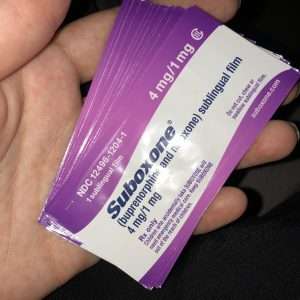What is Suboxone?
Suboxone (buprenorphine/naloxone) is a brand-name prescription drug. It’s used to treat dependence on opioid drugs.
Suboxone comes as an oral film that’s placed under your tongue (sublingual) or between your gums and cheek (buccal). The film dissolves in your mouth.
Suboxone contains two drugs in each film: buprenorphine and naloxone. It’s available in four strengths:
- 2 mg buprenorphine / 0.5 mg naloxone
- 4 mg buprenorphine / 1 mg naloxone
- 8 mg buprenorphine / 2 mg naloxone
- 12 mg buprenorphine / 3 mg naloxone
What’s the Difference between Subutex and Suboxone?
Both Subutex and Suboxone contain buprenorphine. While both drugs were developed at around the same time, Subutex was formulated first. While it was found to be relatively effective in the treatment of opiate addiction, there was still a tendency to abuse the drug. Many users sought to inject the drug intravenously in order to obtain the high they had become accustomed to with heroin or prescription painkillers. They often succeeded in doing so, giving rise to the need to develop another drug to address this issue: Suboxone.
The History Of Buprenorphine
Buprenorphine, sometimes called bupes on the street, was discovered in 1966, at a home products company Reckitt and Colman. They believed that “opioids with structures substantially more complex than morphine could selectively retain the desirable actions whilst shedding the undesirable side effects,” and their main goal was to find such an opioid. They had two failed attempts before finally putting buprenorphine into clinical studies. When presented at major conferences, buprenorphine was attractive to many pharmacologists because it was seen as an effective pain killer that didn’t have a high abuse potential, and it also had potential as a drug treatment for narcotic addiction. Despite this realization it took almost three decades for it to be used therapeutically.








